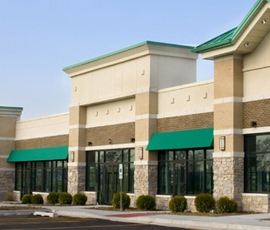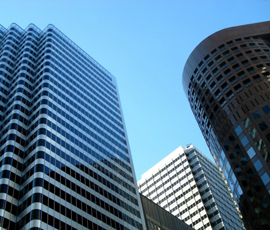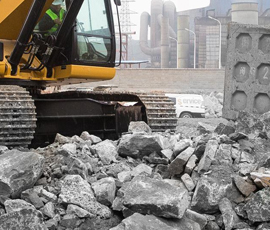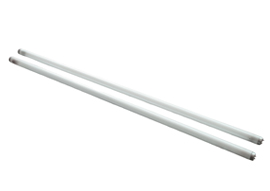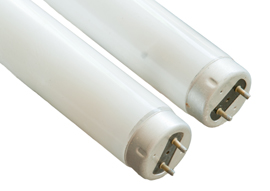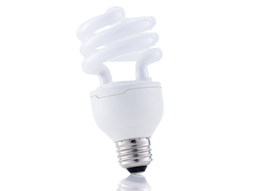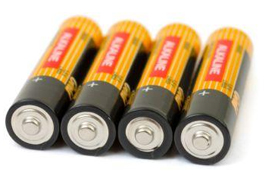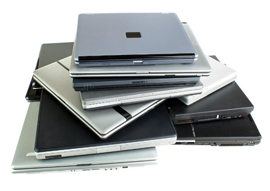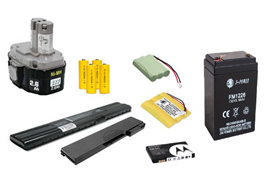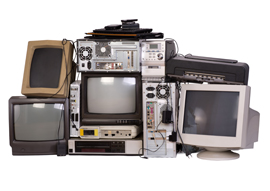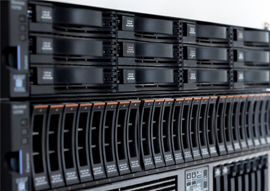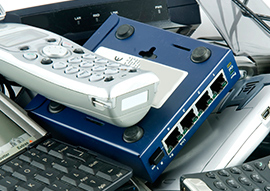Why Recycle?
1. Legal Requirements:
All fluorescent lamps and tubes are considered hazardous waste in California when they are discarded because they contain mercury. Fluorescent lamps and tubes:
- Fluorescent tubes, including low mercury tubes.
- Compact fluorescents, including low mercury lamps.
- Metal halide lamps, such as floodlights for large indoor and outdoor areas and gymnasiums.
- Sodium lamps, such as those sometimes used as security lighting and outdoor floodlights.
- Mercury vapor lamps, such as those sometimes used for street lighting.
All fluorescent lamps and tubes must be recycled, or taken to a household hazardous waste disposal facility, a universal waste handler (e.g., storage facility or broker), or an authorized recycling facility.
On February 9, 2004, regulations took effect in California that classified all discarded fluorescent lamps and tubes as hazardous waste. This includes even low mercury lamps and tubes marketed as "TCLP passing" or "TTLC passing." Most businesses, institutions, and agencies are now prohibited from disposing of any type of fluorescent lamps and tubes in the nonhazardous solid waste stream. Hazardous waste fluorescent lamps and tubes can be managed under the simple requirements of the state's Universal Waste Rule, provided they are sent to an authorized recycling facility. Under a temporary disposal exemption, California households were allowed to discard their own fluorescent lamps and tubes as non-hazardous solid waste (ordinary trash) until February 9, 2006.
Now all fluorescent lamps and tubes must be recycled, or taken to a household hazardous waste disposal facility, a universal waste handler (e.g., storage facility or broker), or an authorized recycling facility. (Title 22, division 4.5, chapter 23, section 66273.8)
2. Cost Effective
Proper disposal and recycling of your fluorescents is a guaranteed way to avoid fines and enforcement actions which can easily exceed the cost of lamp recycling.
Facilities that do not comply with these regulations not only bring harm to the environment, they risk costly restitution. In fact, if fluorescent lamps are found in landfill sites and traced back to the offending parties, they can be penalized with the cost of the landfill cleanup, in addition to any other fines levied. Hence, it greatly benefits companies and institutions to adhere to EPA guidelines and dispose of fluorescent lamps appropriately.
3. Environmental Issues
When mercury-containing lamps or tubes are placed in the trash and collected for disposal, the lamps or tubes are broken and mercury is released to the environment. Mercury vapors from broken lamps or tubes can be absorbed through the lungs into the bloodstream. People who are particularly close to the breakage are especially at risk. Mercury from broken lamps and tubes can also be washed by rain water into waterways.
It is estimated that nearly 75 million waste fluorescent lamps and tubes are generated annually in California. These lamps and tubes contain more than a half a ton of mercury. The mercury in urban storm water sediment results in part from improperly discarded fluorescent lamps and tubes.
4. Go Green!
Starting a waste recycling program within your business is a simple way to go green! With recycling, a substantial portion of our waste can be broken down into their original elements and be used to produce new materials. In this way, we can reduce the harmful waste we discard into the environment, ie. pollution, and even conserve raw materials. Also, implementing a recycling program can help your business meet LEED prerequisites.


